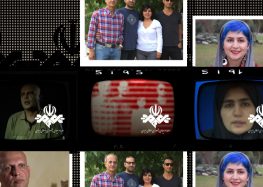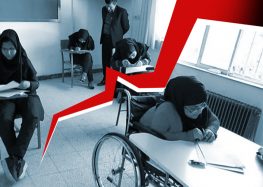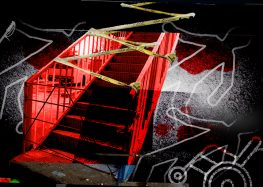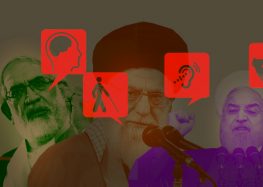Inaccessible Louvre Exhibit Highlights Ongoing Challenges For Persons Living With Disabilities in Iran
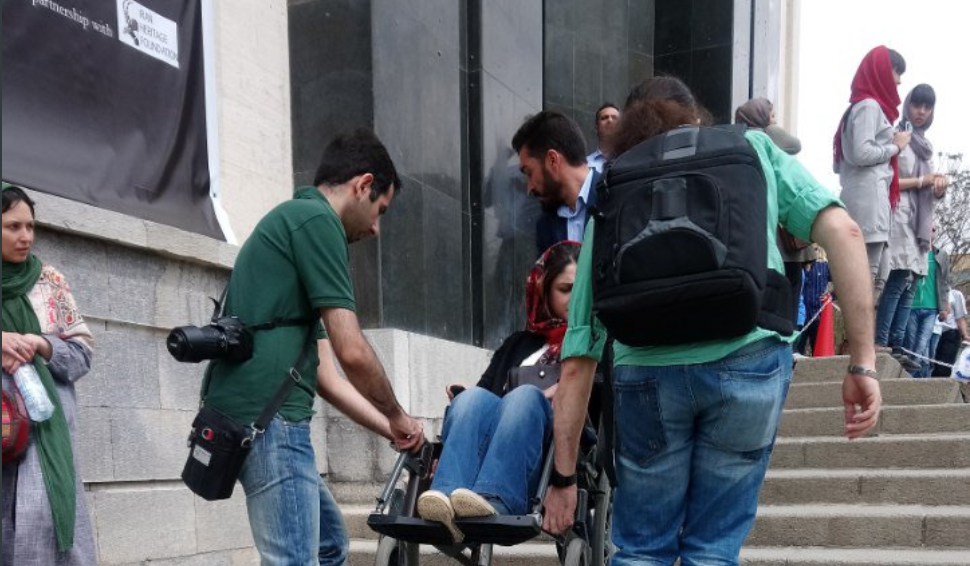
A popular exhibition by the Louvre Museum in Paris at the National Museum of Iran has come under criticism because it is inaccessible to people living with disabilities.
From March 2018 until June, works of art from the Louvre will be displayed in Tehran to mark the 80th anniversary of the Iranian museum.
“Unfortunately the National Museum of Iran, like many of our other public spaces, does not have suitable facilities for the commute of individuals with disabilities,” tweeted Mahmoud Sadeghi, a reformist member of Parliament (MP) from Tehran, on March 30, 2018.
“Of course, according to the authorities, the museum does have a special ramp, but it has been closed due to a request from Louvre Museum officials in order to protect the works on exhibit!” he added.
Exactly why the ramp and the exhibit are inaccessible to persons with disabilities is unclear.
Regardless, the National Museum of Iran, which operates under the state-funded Cultural Heritage and Tourism Organization, is responsible for making public spaces accessible to all people in Iran.
Even with a ramp, the exhibit would remain inaccessible to various people living with disabilities since it would only assist people with wheelchairs with getting in the front door.
Widespread Problems
The problem is not exclusive to the national museum in Tehran. The Cultural Heritage and Tourism Organization has not implemented adequate measures at various cultural sites including museums that would enable all citizens to visit them.
In October 2015, Esmail Sheikh-Gharaei, the director general of the Pars Association for the Disabled, described various shortcomings in public infrastructure in Iran for people living with disabilities.
“The audio-visual departments at museums are not complete,” he told the semi-official Mehr News Agency. “The hearing-impaired cannot hear the guides and the information posted next to the items in the museums is not complete in order to free them from the need to hear the guides and to see well.”
He continued: “There are also no museum guides that provide complete information for the visually-impaired. For the latter group of individuals, there should be a special room but there are none. In hotels there should be special rooms for the disabled according to international standards but such facilities do not exist even at Iran’s five-star hotels.”
“Also, the bath and sanitary service doors should be more than 80 centimeters wide but how many hotels are complying to allow the disabled to enter with a wheelchair?” asked Sheikh-Gharaei.
Two years later, in December 2017, the semi-official Iranian Students News Agency (ISNA) reported that the National Museum of Iran had made audio equipment available to blind people but other museums in the country remain inaccessible to people living with blindness or deafness.
Slow Pace of Change
Iranian officials have made numerous promises over the years to enhance accessibility throughout the country but the pace of change has been slow or insignificant.
In November 2017, Ali Asghar Mounesan, the vice president and director of the Cultural Heritage and Tourism Organization, told ISNA that all tourist locations should be made accessible to everyone.
“Attention should be paid to preparing suitable spaces to allow the disabled and veterans to make better use of them,” he said. “Therefore, in the ratification of plans by the National Development Fund, we will include compliance with refitting principles in these areas.”
The National Refitting Headquarters was established in 2014 to implement Article 2 of the Law for the Protection of the Rights of Persons With Disabilities, which calls for making public spaces in Iran accessible for everyone.
The organization was created to increase the quantity and quality of accessible areas in Iran. However, many places in Iran are still not accessible to disabled individuals four years after the organization’s creation.
For example, in Tehran, only 24 percent of public spaces have been refitted, and this has made commuting difficult or impossible for persons with disabilities in most of the city.
Inaccessible urban facilities and public areas can lead to isolation for persons living with disabilities.
Officials have publicly acknowledged this issue.
“The city’s lack of preparations for the disabled has resulted in them staying at home, in some ways, imprisoned at home,” said Tehran Mayor Mohammad Ali Najafi in March 2017.
According to Article 9 of the UN Convention on the Rights of Persons With Disabilities, which Iran ratified in 2009, the Iranian government must take “measures, which shall include the identification and elimination of obstacles and barriers to accessibility.”
According to Iran’s Ministry of Labor, 10 million Iranians were living with some form of a disability in 2017. But disability rights organizations have reported that this number is much higher.
In 2016, only 1.3 million people living with disabilities in Iran were registered with the Welfare Organization of Iran, the main organization providing state services to people living with disabilities.

